What Colors Do You Get When You Mix Red and Blue
In this article, we're going to answer the question "what color does red and blue make when mixed?"
When you think of the color red, what comes to your mind? You probably think of things like power, a stop sign, an apple, or even maybe a drop of blood.
What comes to mind when you think of the color blue? Do you think of the sky, water, or have a feeling of calmness? All of these come to our mind.
Individually, each of these colors is vibrant and powerful in their own ways, but what happens when you mix red and blue together? Does it create another beautiful color or something less desirable?
Today we're going to explore what happens when red and blue are mixed, and even go into some color theories so you get a deeper understanding of how it all works. Let's get started.
Mixing Paint Colors in School
Think back for a second when you were in elementary school. Do you remember when your teacher was talking about art and how to paint? You were probably looking forward to making your very first masterpiece.
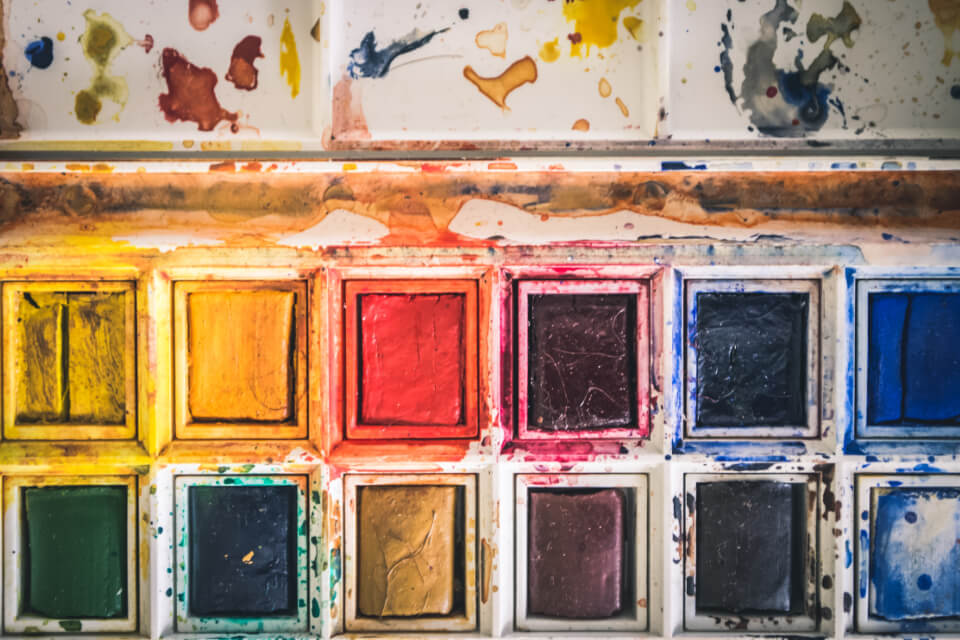
To help you get started, your teacher taught you how to mix the current colors on your palette to create new ones. She demonstrated this by showing a color wheel complete with all the primary, secondary and tertiary colors.
Your teacher wrote on the board: Red + Blue = What Color?
In this illustration, she probably showed you that mixing blue and red will result in purple (violet). This is true to an extent because you need to know that this is only one piece of the puzzle.
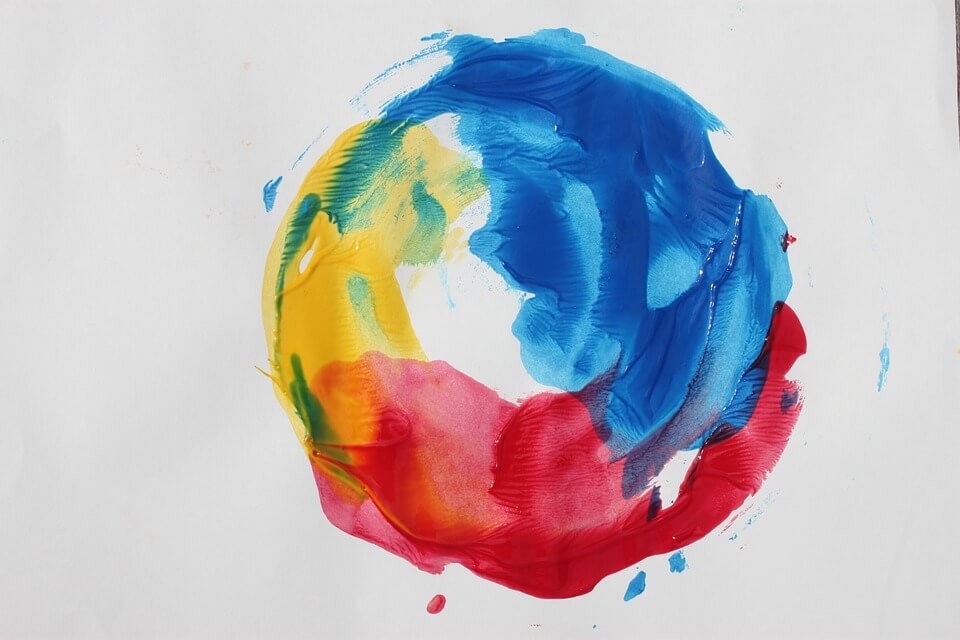
When using paint colors… red and blue make purple. But does red and blue make another color? Here is a clue… it depends on what color theory we're discussing. Let us explain…
Primary Color Model (Red, Blue, and Yellow)
First, you need to have a good understanding of how the color wheel actually works. One thing about the wheel is that it follows the Primary Color Model.
In the color wheel chart below you'll see that the Primary Colors are: Red, Blue, and Yellow.
In the middle graph, it displays the Primary and Secondary Colors: Green, Violet, and Orange
And in the last color wheel, it displays the Tertiary Colors. The Tertiary Colors are hues that you get when you combine primary and secondary colors.
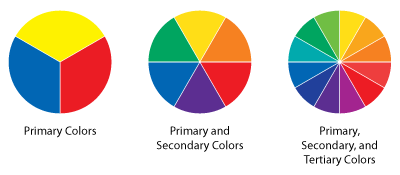
The color theory is easy to understand when it's displayed in this type of graph or pie chart.
But, it still may be confusing for some… so to help explain this, the color chart below clearly shows that when you mix the primary colors red and blue together it makes violet or some may call it purple.
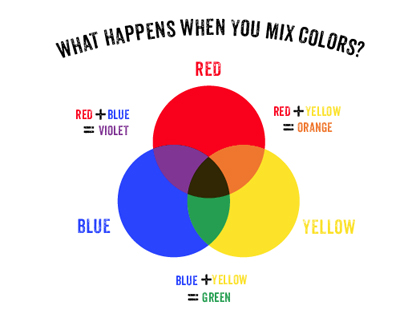
As mentioned before, this is only a part of the puzzle. Continue reading to the next section to find out more…
RGB (Red, Green, Blue) and CMY Color Model (Cyan, Magenta, Yellow)
If we are talking about paint, then red plus blue definitely equals purple. However, it is another thing if we talk about the light spectrum, which follows the CMY Color Model. This model uses cyan, magenta and yellow as the primary colors.

Now, look back at the time you buy printer ink. These stores sell cartridges labeled RGB and CYM. You might have even been confused because red, green and blue are the not primary colors you were taught in school.
Perhaps now is the best time to explain how additive and subtractive colors work. To explain it plainly, additive colors are those that produce white when combined. See the chart on the left above. These hues are red, green and blue.
Meanwhile, subtractive colors are formed by combining two additive primary colors, which are cyan, magenta and yellow.
By combining different additive and subtractive colors, your printer, television, and even your mobile phone are able to recreate a wide variety of colors. This way, they are able to reproduce the hues as close to nature as possible.
What does this information have to do with the color blue and red makes, you ask? The answer rests on additive and subtractive colors. When you mix blue and green, you get cyan. When you mix green and red, you get yellow, but what color does red and blue make when it comes to RGB?
What Color Does Blue and Red Make?
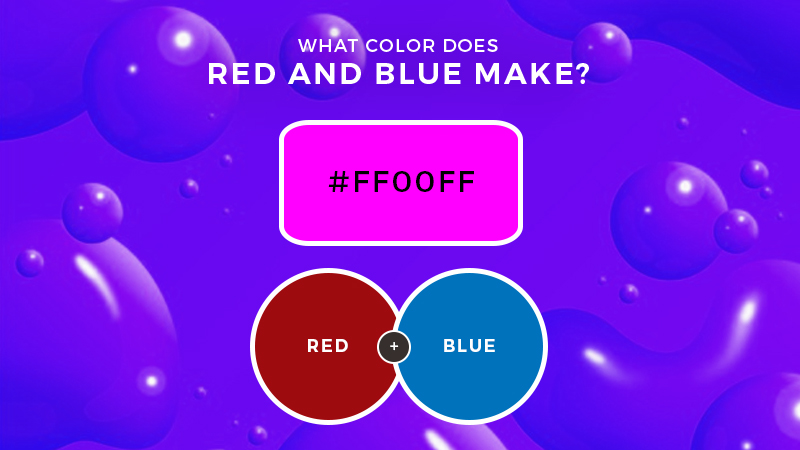
When mixing the colors red and blue in the RGB color wheel, you get magenta. Confusing right!?
You have to be specific about what color theory you're talking about. If you're asking about mixing primary paint colors then red and blue make violet as we explained above.
But, when you're talking about the RGB color scale then as we explained mixing red and blue gives you magenta.
Now that you know this, you may be wondering why schools teach that red, blue and yellow are the primary hues. The simple answer to this is this: your first exposure to color theory is not with the light spectrum but with coloring materials like crayons or paint.
While the light spectrum forms hues by adding or subtracting light, the pigment spectrum relies on the frequencies of light that bounce off the surface into your eyes. In addition, it is easier to combine paint instead of adding and subtracting light.
Bottom Line
With a little understanding of how paint works, as well as additive and subtractive hues, it is easier to understand how colors are created.
Whether you are a painter who mixed colors on your palette or a digital artist who works on your computer to create masterpieces, this will definitely help you understand the science of experimenting with colors.
We hope you learned something new and that you enjoyed discovering what color blue and red actually makes.
Source: https://marketingaccesspass.com/what-color-does-red-and-blue-make/
0 Response to "What Colors Do You Get When You Mix Red and Blue"
Post a Comment